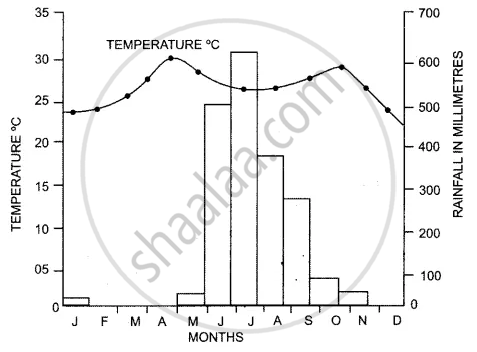Advertisements
Advertisements
प्रश्न
What is the Inter-Tropical Convergence Zone?
उत्तर
The Inter-Tropical Convergence Zone (ITCZ) is a low-pressure zone located at the equator where trade winds converge, and so, it is a zone where air tends to ascend. In July, the ITCZ has located around 20° N-25° N latitudes (over the Gangetic plain). These are sometimes called the monsoon trough. This monsoon trough encourages the development of thermal low over north and northwest India. Due to the shift of ITCZ, the trade winds of the southern hemisphere cross the equator between 40° and 60° E longitudes and start blowing from southwest to northeast due to the Coriolis force. It becomes southwest monsoon. In winter, the ITCZ moves southward, and so the reversal of winds from northeast to south and southwest takes place. They are called northeast monsoons.
APPEARS IN
संबंधित प्रश्न
Give two ways by which the trees that are found here have adapted to the climate.
What is the name given to the climate of India? Mention any two factors responsible for such a type of climate.
Explain two factors that effect the climate of India giving a suitable example for each.
Name two types of cyclonic systems that affect India and two areas that receive rainfall from these systems.
State the main factors that affect the climate of Indian sub-continent.
The northern plains of India do not freeze in winter.
Explain giving any two reasons why the deltas of the river Mahanadi suffer from occasional floods.
Study the Temperature-Rainfall graph of station X below and answer the questions that follow :

(a) Is the location of station X Inland or coastal ? Give a reason for your answer.
(b) Which branch of the South West Monsoon brings, rain from the month of June to September?
Answer the following question.
What are the two climatic conditions required for the cultivation of ground-nuts in India?
Name the month when the highest amount of rainfall is received.
Answer the following question.
Why does Break in Monsoons occur?
Continental climate is experienced by ______.
The mountain which stands parallel to the direction of the south-west monsoon wind.
______ experience continental climate.
The ______ prevents the cold polar winds blowing from Central Asia.
Consider the given statements and choose the correct option from the given below ones
Assertion(A): The Himalayas acts as a climatic barrier.
Reason(R): The Himalayas prevents cold winds from central Asia and keep the Indian Sub-continent warm.(Give option for this questions)
Climate of India is affected by ______.
List the factors aff ecting climate of India.
What is meant by 'normal lapse rate'?
Mountains are cooler than the plains.
Tamil Nadu gets its winter rainfall from the ______ winds.
Name the factors affecting the climate of India.
The climate and weather conditions in India are governed by the three-atmosphere conditions. Name them.
What are the three important factors which influence the mechanism of Indian weather?
Which type(s) of cyclones cause rainfall in north-western India during winter? Where do they originate?
Find out the temperature of Ooty (2240m) when it is 35°C in Chennai (6.7m)
